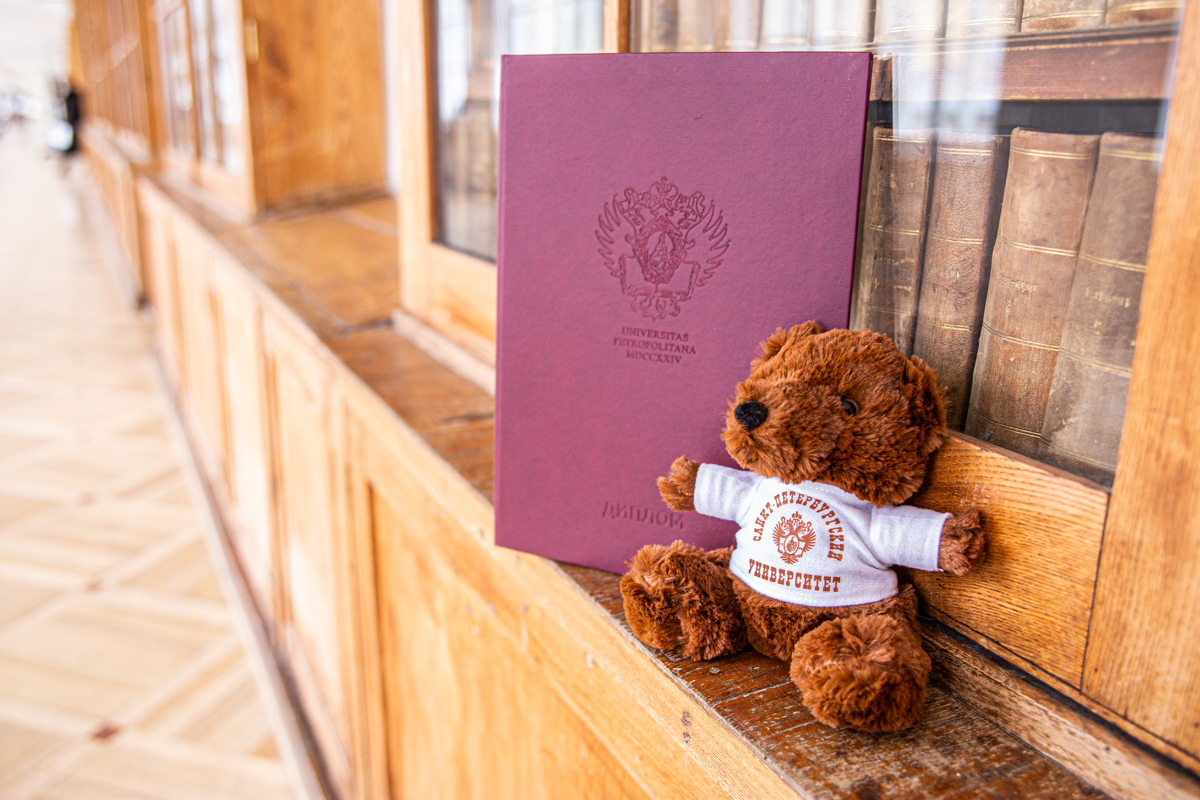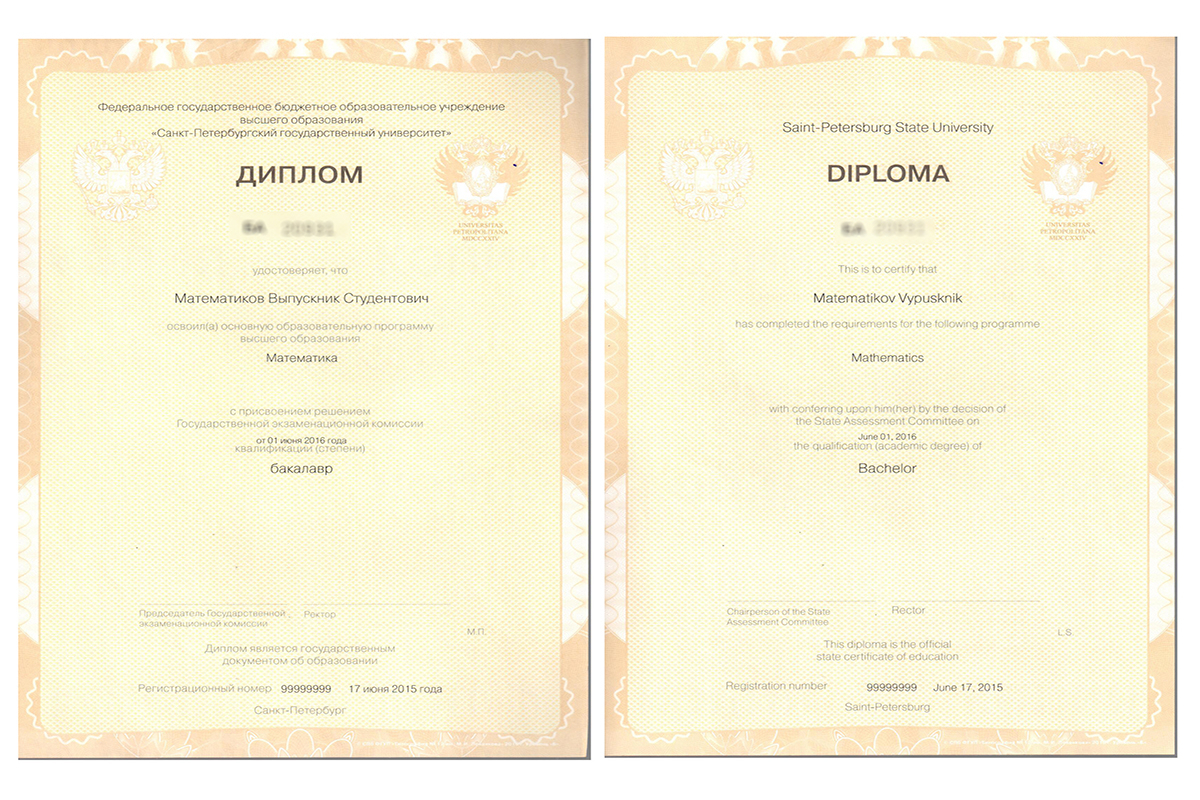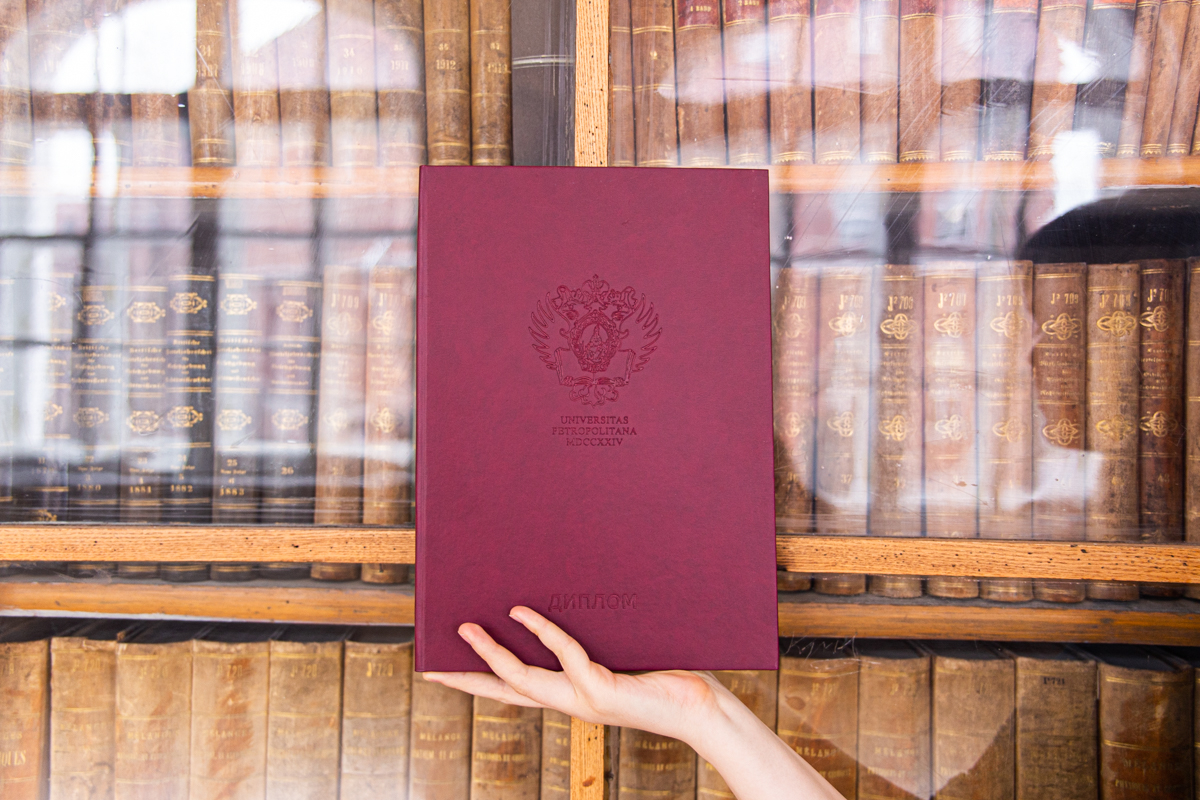Things you need to know about diploma of SPbU
Since May 2010, St Petersburg University has been issuing its own diplomas in Russian and English. It includes a number of features (both in design and content), which help to ensure the competitiveness of the graduates in the labour market.
How does a diploma of SPbU look like?
‘The diploma size of SPbU is larger than diplomas of other universities (with the exception of diplomas of Lomonosov Moscow State University). SPbU issues diplomas of A3 size instead of A4 format’, said Lyubov Bogdanova, Head of the final certification department. Diplomas of SPbU are different in colour: the cover of all bachelor’s, master’s and postgraduate diplomas of St Petersburg University is covered with balacron of a noble red-burgundy colour with a cherry tint, whereas diplomas of other universities are issued in blue and red (for graduates with honours) colours.
In accordance with Federal Law No. 259-FZ ‘On Lomonosov Moscow State University and St Petersburg University’ dated 10 November 2009, St Petersburg University issues diplomas of special format, approved and sealed by SPbU.
The front cover of diploma is imprinted with the emblem of St Petersburg University, the Latin name of St Petersburg (Universitas Petropolitana) and University’s foundation year in Roman numerals (MDCCXXIV, i.e. 1724).

On the inside front of the cover four silk ribbons are glued in — one at each of the corners of the cover. A diploma is put into the corners formed by ribbons on the left side of the cover, and diploma supplements are put on the right side of the cover. The diploma itself is designed in cream, light-toned beige colours. The diploma with honours differs from a regular diploma by "with distinction" inscription under the "diploma" word.
Degrees of protection
The diploma of SPbU has eight degrees of protection, including exclusive watermarked paper, guilloche printing (it is a complex pattern that consists of lines, lines’ width of which is less than 0.1 mm) designed specifically for the diploma of St Petersburg University. Pattern of this printing is difficult to repeat, because it has invisible lines that are visible only under an ultraviolet light and elements that disappear under infrared rays, but are visible under daily lighting.

‘The diploma of SPbU has been examined by experts who evaluated the protection of diploma against falsifications’, noted Lyubov Bogdanova.
The measures taken for protection are necessary because the diploma of St Petersburg University is in demand not only in Russia, but also abroad. In November 2021, St Petersburg University received a request from Biruni University in Istanbul to provide information about a Turkish citizen who had presented diploma of St Petersburg University. After checking of the information, it was revealed that she had never been a student of the University. For that reason, she could not have the diploma, certificates or characteristics issued by St Petersburg University. Representatives of SPbU informed their Turkish colleagues and law-enforcement authorities about this situation.
Diploma Supplement
SPbU Diploma Supplement consists of 12 pages put into the cover of diploma.

It is in line with basic parameters of Diploma Supplement, approved by the European Commission, the Council of Europe, and UNESCO known as "European Diploma Supplement". The SPbU Diploma Supplement contains much more information than similar documents issued by other universities. In particular, the document provides a detailed list of the components of the educational programme: lecture courses, seminars, laboratory works and academic acievements on these disciplines in accordance with the ECTS (European Credit Transfer and Accumulation System) grading scale. Besides, the SPbU Diploma Supplement contains information about the educational system in Russia, which will be necessary for graduates applying for a job in a foreign company. Information about completion of online courses as credits for disciplines can also be included in diploma supplement of SPbU students.
According to the graduates, it is a great honour and a sign of distinction to receive the diploma of St Petersburg University, that provides high quality education.
‘This diploma format significantly expands the academic freedom of students and allows them to become full participants in the international labour market. In addition, it is more attractive for foreign prospective students: students who are citizens of other countries will not need to obtain certified translation of diploma in order to be accepted abroad’, said Marina Lavrikova, Senior Vice-Rector for Academic Activities and Teaching Methods.
Since 2016, SPbU diplomas include information about members of state examination commission, employers who approved topics of graduation thesis. In addition, diploma supplement contains information about teachers who taught courses and administer exams and credits, places, where student took training practice.

Answering the question about plans to make changes in diploma of St Petersburg University in this year, Head of the final certification department noted that, graduates of 2022 would receive renewed diplomas. Students suggested specifying the English language proficiency in diploma, and from this year, this information will be included in the diploma of SPbU.
QR code
Since 2016, diplomas include QR codes, which a potential employer can use to get access to the graduate’s personal page on the SPbU portal.
The QR code make it possible to find information about academic performance of a student and even to examine graduation thesis. This information helps an employer to form an impression about an applicant for a job and take final decision on this matter.
Yulia Sakharova, Director of Headhunter for the North-West Region, believes that QR code in diploma provides the great opportunity to find more information about graduates, especially if the young specialist has no work experience yet. She also noted that it is important to collect as much information about the candidate for a position from various sources as possible. ‘The fact that today companies have the opportunity to obtain additional information from online sources shows the University’s modern approach to students employment’, said Yulia Sakharova.



